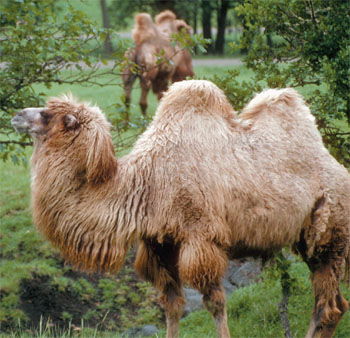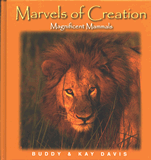Bactrian Camel
The Bactrian camel is the only truly wild, two-humped camel in the world.

The Bactrian camel is the only truly wild, two-humped camel in the world. It is named for the area it inhabits, Bactria, on the border of the former Soviet Union. The wild camel once roamed all of Asia but now can only be found in the Gobi Desert.
Special God-designed features of the camel make survival in the harsh desert possible. It has thick, wooly fleece to protect it from the hot sun and help it fight off the cold in the winter; the wool is dark brown to beige. The camel can tolerate great variations in temperature. Other special features include nostrils that close to keep the sand out, eyelashes that are double-rowed to protect the eyes, knees that are padded for kneeling, and broad feet with expandable pads for walking in the sand.
The Bactrian camel feeds on tough grass, herbs, branches, shrubs, and foliage. They have a four-chambered stomach and chew their cud like a cow. They usually search for food in the early morning or evening.
One amazing feature of this camel is its two humps. These humps are food and water reserves. The camel can go a long time without water (up to ten times longer than man can), and can drink up to 125 pints (237 l) to replenish its water supply.
The Bactrian camel herds contain 6 to 20 animals led by a mature male. These camels breed in February, and their gestation period lasts 13 months. Within several days of birth, the calf can keep up with its mother very well. The calf will nurse for five years, at which point it reaches maturity.
Man has domesticated some Bactrian camels. They are an important resource for wool, milk, meat, and transportation in the desert.
Bactrian Camel
Artiodactyla • Camelidae • Camelus Bactrianus
Height: 6 feet (1.8 m)
Length: 10 feet (3 m)
Weight: 1,575 pounds (700 kg)
Life Span: longest recorded, 50 years
Special Design Feature: The wool of the camel protects
it from extreme weather, its nostrils close to
keep sand out, and their broad feet expand to walk
easily in the sand.
Did You Know? The fat in the humps of the camel
store reserves of food and water. They can survive
ten times longer than man can without water.
None
BrowseRecommended Resources
- © 2025 Answers in Genesis
- Privacy Policy
- Contact
- About

